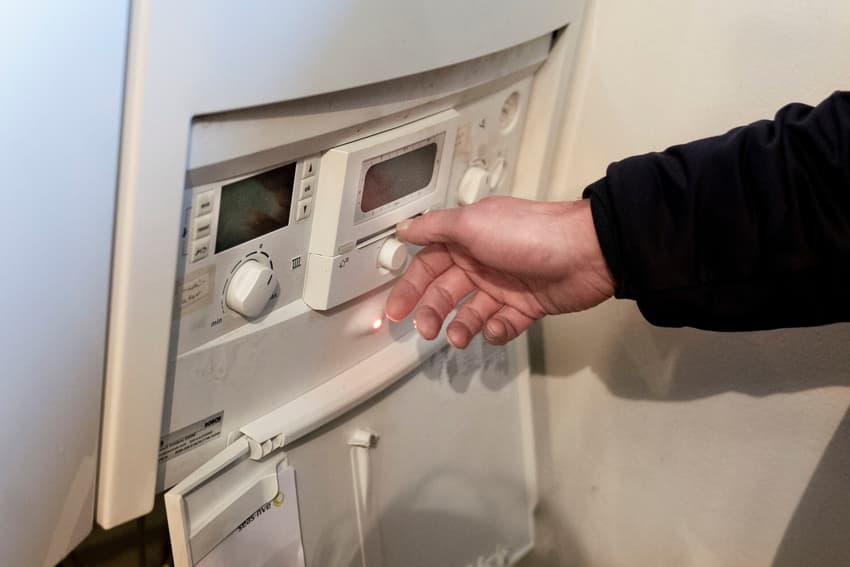How to apply for Denmark’s 6,000 kroner energy relief if you were missed by automatic payments

Denmark last year sent an automatic 6,000-kroner payout to eligible households in a measure intended to relieve people struggling with high energy costs. People who think they may qualify for the money, but didn’t receive it, can soon apply.
The tax-free cash payout of 6,000 kroner was approved by parliament last spring in response to rising energy prices and sent out in August to households which met the set criteria.
The payments were made automatically, so no application was needed at the time.
Households with a collective pre-tax income of under 706,000 kroner were eligible for the one-off cash boosts. Additionally, the household should be primarily heated by individual gas heaters (or have experienced similar increases to bills as such homes) or be located in a district heating area in which the heating is produced by at least 65 percent gas.
But errors in registration data could result in households which meet the criteria not receiving payments automatically, the Danish Energy Agency said at the time.
People who believe that their household meets the criteria, but have not received the money, can therefore apply for it from early 2023.
A significant number of people also received the money even though they did not fulfil the criteria, for example because they had replaced their gas boilers but the registration data on their homes was outdated.
READ ALSO: Up to 70 Danes offer to pay energy money back to government
An additional application round for the heating cheques opens on March 14th, according to a notice from Energy Minister Lars Aagaard to parliament’s energy committee.
“The vast majority of households which are entitled to the heating cheque have received the payment. Some households, which are entitled according to the law have meanwhile seen circumstances which mean they unfortunately didn’t receive the cheque automatically,” he wrote.
Specifically, the Danish Energy Agency (Energistyrelsen) will open a digital application platform via the website varmecheck.dk.
If your household did not receive the payout last year, you can apply for it if the household’s overall income in 2020 was less than 650,000 kroner (after the AM-bidrag tax contribution is deducted).
Application must be made within an eight-week window. You can enter your email address on the varmecheck website to receive a reminder when the application round opens.
“Reasons that households have not received the cheque automatically could for example be that there was data missing or not sufficiently ready for an automatic payment to happen, [or] that the oldest person in the household didn’t have a Nemkonto [designated bank account, ed.] for the money to be paid into,” Aagaard wrote in the parliamentary note.
Comments
See Also
The tax-free cash payout of 6,000 kroner was approved by parliament last spring in response to rising energy prices and sent out in August to households which met the set criteria.
The payments were made automatically, so no application was needed at the time.
Households with a collective pre-tax income of under 706,000 kroner were eligible for the one-off cash boosts. Additionally, the household should be primarily heated by individual gas heaters (or have experienced similar increases to bills as such homes) or be located in a district heating area in which the heating is produced by at least 65 percent gas.
But errors in registration data could result in households which meet the criteria not receiving payments automatically, the Danish Energy Agency said at the time.
People who believe that their household meets the criteria, but have not received the money, can therefore apply for it from early 2023.
A significant number of people also received the money even though they did not fulfil the criteria, for example because they had replaced their gas boilers but the registration data on their homes was outdated.
READ ALSO: Up to 70 Danes offer to pay energy money back to government
An additional application round for the heating cheques opens on March 14th, according to a notice from Energy Minister Lars Aagaard to parliament’s energy committee.
“The vast majority of households which are entitled to the heating cheque have received the payment. Some households, which are entitled according to the law have meanwhile seen circumstances which mean they unfortunately didn’t receive the cheque automatically,” he wrote.
Specifically, the Danish Energy Agency (Energistyrelsen) will open a digital application platform via the website varmecheck.dk.
If your household did not receive the payout last year, you can apply for it if the household’s overall income in 2020 was less than 650,000 kroner (after the AM-bidrag tax contribution is deducted).
Application must be made within an eight-week window. You can enter your email address on the varmecheck website to receive a reminder when the application round opens.
“Reasons that households have not received the cheque automatically could for example be that there was data missing or not sufficiently ready for an automatic payment to happen, [or] that the oldest person in the household didn’t have a Nemkonto [designated bank account, ed.] for the money to be paid into,” Aagaard wrote in the parliamentary note.
Join the conversation in our comments section below. Share your own views and experience and if you have a question or suggestion for our journalists then email us at [email protected].
Please keep comments civil, constructive and on topic – and make sure to read our terms of use before getting involved.
Please log in here to leave a comment.